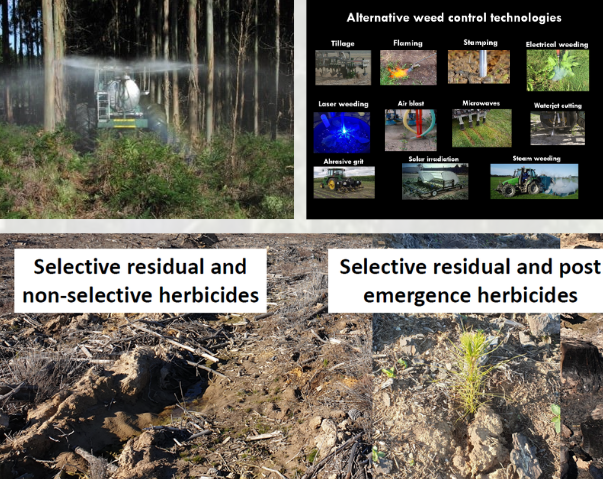Development of a portfolio of alternative weed control strategies for use in plantations.
Lead Researchers: Dr Jack Desbiolles, Dr Jim O'Hehir
The Project
The productivity, viability and economic return of Australian forest plantations is underpinned by silvicultural systems able to achieve cost-effective weed control during the tree crop establishment phase. While Australian forest managers continue to rely mainly on agricultural chemicals to control weeds, there is growing uncertainty over the social license to maintain such practice in the medium and longer term which threatens the productivity of timber production. The objective of this project was to review weed management practices in Australian plantation forestry and identify opportunities for more effective and reduced use of chemicals, as well as adoption of non-chemical alternatives.
Industry Partners
UniSA, worked with industry partners Forico, GTFP, HQP, HVP, Midway, PFO, SFM, Timberlands, FC NSW, FPM Research Consortium, USC
Our Research Approach
Key issues were identified in an initial project workshop with the industry partners and contractors. The reports are based on merging of information from field visits, industry consultation, seminars, literature search and discussion information to identify current weed control methods, drivers of poor survival and growth and certification issues. A key component of the project methodology was to integrate agricultural expertise, drawing insights from best practice weed management and machinery innovations in agricultural contexts.

A summary of the drivers of a weed control regime documented by this study.
Key Findings
Despite prolonged and concerted efforts, no cost-effective replacement of glyphosate-formulations is expected in the foreseeable future
- Improve effectiveness and reduce use of current cheistries to improve social license
- Actively consider innovation: integration of non-chemical weed control alternatives
While aspects of best practices are known, significant barriers prevent implementation
- Improve knowledge of weed spectrums at each site and weed biology
- Address labour shortage and OHS issues
Opportunities exist for more impactful contractor collaboration
- Actively engage with contractors in the continuous improvement of the production system
Forestry sites are 'harder' to mechanise than agricultural sites, limiting weed management options and increasing complexity and costs
- Improve site conditions under a more holistic approach
- Optimise slash management to open new treatment options
Holistic management is essential to optiimise silvicultural systems
- Develop synergies via holistic and adaptive strategies
What is the Future of R&D in Weed Management
The speed of technology development is rapid hence there is a need to continually interpret and evaluate developments.
Spraying drones:
- Cost-effectiveness in various weed management contexts
- Potential as integrated detection and delivery platforms
Contractors
- Partnerships fostering innovation
- Motivation for continuous improvement
Satellites
- High resolution images at high frequency weed monitoring
Silvicultural systems
- Minimise costs and risks via integrated systems
- Site improvements to increase operational choices
- Optimum physiological timing of weed management interventions
- Effective control of weed seed setting
- Site specific weed control treatments
Technology
- Improved efficacy of current chemical treatments
- Opportunities for non-chemical treatments
- Adaptation from agricultural best-practice





